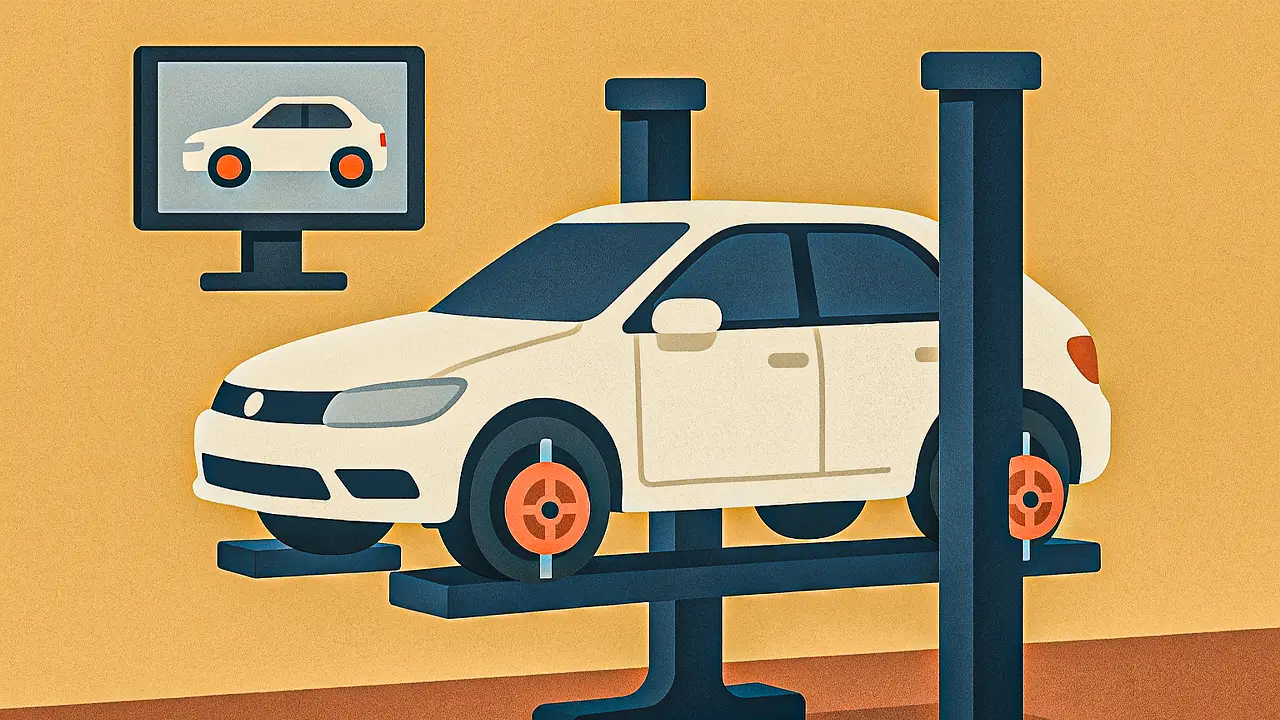Wheel alignment is an important but frequently ignored part of car maintenance. It describes adjusting a car’s suspension system to ensure the wheels are positioned according to the manufacturer’s recommendations. Routine wheel alignment has several benefits, from increased safety and cost savings to better vehicle performance. This article discusses the many benefits of keeping your wheels aligned correctly.
Improve Safety and Handling of Vehicles
Enhanced vehicle control and safety are two of the biggest advantages of routine wheel alignment. A car that has misaligned wheels may pull to one side, making it challenging to drive straight. This can be particularly risky when driving in bad weather or at high speeds. All four wheels operating in unison with proper alignment make for a steady and predictable driving experience.
Furthermore, accidents brought on by irregular steering or loss of control is less likely when alignment is done correctly. Correct wheel alignment also maximizes braking performance, guaranteeing that the car stops in a straight line without sliding to one side.
Increased tire longevity
Tires are an important investment, and proper wheel alignment can increase their lifespan. Misalignment causes unequal tire wear, resulting in early tire replacement. For example, if the wheels are not properly aligned, one side of the tire may wear out faster than the other, resulting in bald areas or excessive wear along the edges.
Regular alignment ensures that the tires make even contact with the road, distributing wear evenly across all four tires. This increases their utility while lowering the frequency and cost of tire changes.
Enhanced Fuel Efficiency
Regular wheel alignment also improves fuel efficiency. When the wheels are misaligned, the vehicle encounters increased rolling resistance, requiring the engine to work more to propel the vehicle ahead. This leads to increased fuel usage and higher pump prices.
Proper alignment ensures that the wheels run smoothly and with minimal resistance, allowing the vehicle to attain maximum fuel economy. This is especially useful for those who travel long distances, as slight misalignments can result in significant fuel waste over time.
Reduced wear on suspension and steering components
Wheel alignment has a direct impact on the vehicle’s suspension and steering systems. When the wheels are misaligned, the suspension and steering components are subjected to higher stress, which causes premature wear and damage. Misalignment can cause undue strain on components such as tie rods, ball joints, and wheel bearings.
Regular alignment helps to distribute stress uniformly across the suspension system, eliminating excessive wear and the probability of costly repairs. This improves the overall longevity of the vehicle’s mechanical systems.
Smoother and More Comfortable Ride
Driving a car with misaligned wheels can cause vibrations, excessive road noise, and an overall unpleasant ride. This is because uneven tire wear and incorrect wheel angles lead the car to resist its natural movement, resulting in a rough or shaky driving experience.
Proper wheel alignment ensures a smoother ride by keeping the tires in optimal contact with the road. This improves comfort for both the driver and the passengers, making long trips more fun and less exhausting.
Prevention of Costly Repairs
Ignoring wheel alignment difficulties can lead to more serious and costly problems over time. For example, extended misalignment can harm suspension components, tires, and even the engine. Replacing these parts can be expensive; therefore preventive maintenance is a far more cost-effective option.
By investing in regular wheel alignment, vehicle owners may avoid these avoidable expenses and keep their vehicles in good condition for longer. The expense of an alignment service is relatively modest when compared to the possible repair bills caused by neglect.
Conclusion
Regular wheel alignment is an important part of vehicle maintenance that gives various benefits such as improved handling, increased safety, higher fuel efficiency, longer tire life, less wear on suspension components, and a more comfortable ride. It also helps to avoid costly repairs and adds to environmental protection.
To reap these benefits, vehicle owners should make wheel alignment a priority in their routine maintenance program. This allows them to provide a safer, more efficient, and cost-effective driving experience for years to come.
- Nearly 30% of UK Drivers Believe Car Tax Should Be Based on Mileage — Survey
- Why Planes and Boats Escaped the Luxury Tax But Cars Didn’t
- Australia’s Headlight Confusion: Authorities Warn Drivers After Viral $250 Headlight Rule Goes Wild Online
- 2025 Hyundai Venue Facelift Launched in India – Full Details, Variants, and Price
- Royal Enfield Bullet 650 Unveiled at EICMA 2025: A Classic Legend Returns
